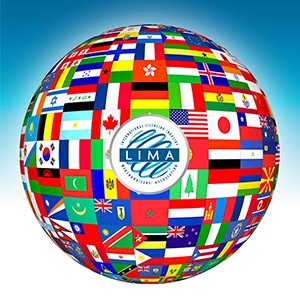Brands Respond to New Retail Realities
GLOBAL–Licensors and licensees are beginning to find ways to deal with the new omni-channel retail reality as e-commerce continues to disrupt the model, according to the 2017 LIMA Global Licensing Survey.
April 6, 2018

Brand owners, agents and licensees share how they are adapting to the changing retail marketplace.
 GLOBAL–Licensors and licensees are beginning to find ways to deal with the new omni-channel retail reality as e-commerce continues to disrupt the model, according to the 2017 LIMA Global Licensing Survey.
GLOBAL–Licensors and licensees are beginning to find ways to deal with the new omni-channel retail reality as e-commerce continues to disrupt the model, according to the 2017 LIMA Global Licensing Survey.
Comments from survey participants provide insight into new trends that executives are seeing in the marketplace and how they are reacting.
It’s sometimes easy to forget that the retailers themselves are also struggling to deal with the new realities of their world. We have heard time and again from retailers in recent years that exclusive product is becoming vital to them as they try to stand out from the crowd. This is echoed in two trends that from the LIMA survey, which indicate an increased focus by brick-and-mortar retailers on direct-to-retail deals and a move toward carrying less brands, but taking the brands they do carry deeper across categories within their stores.
Check out the LicenseTV episode where Cindy Levitt of Hot Topic discusses why exclusivity is so important to her company when it comes to merchandising.
Survey respondents also noted an increasing interest in brands that are backed by content, a trend that is mirrored among licensors who are quickly realizing that those of their brands that didn’t originate in the content space need some kind of story to be successful at retail. A great example of licensor who has been leading the charge in the arena is Hasbro, who for more than a decade has been putting forth a concerted effort to create content (all the way from linear TV to social) for what were traditionally straightforward toy brands (think My Little Pony and Transfromers).
This trend toward content goes even further, with LIMA survey comments indicating that retailers are especially receptive to brands that can create a custom promotional experience or event to stores, as a way to help the retailer drive traffic.
For many of the same reasons, respondents also said that they are seeing momentum for their corporate and evergreen brands at retail, with stores less willing to take risks and looking for brands with proven staying power and immediate consumer recognition. This is good news for the brand licensing sector, whose core purpose is to bring well-known and popular brands to new product categories.
It appears that just as licensors and licensees are becoming more nimble when it comes to e-commerce, the same is true for retailers who are now more willing to secure online-first distribution of product lines, according to survey comments.
The LIMA Survey draws several conclusions about what brand owners can do to adjust to these new retail realities:
Brands need to focus on their online presence and become part of the social media conversation, which requires content. This doesn’t necessarily need to be a television series. Other examples provided include influencer testimonials, a back story and charity linkage.
Corporate brands must find a way to be as relevant in the digital conversation as entertainment brands. For many corporate brands this is being done through events, endorsements and promotions.
Licensors and licensees must adapt their business model to today’s retail reality, which includes accounting for social media, online price optimization and convenient shopping and delivery when building out programs.
With e-commerce disruption happening at different paces around the world, some of the best growth opportunities for licensed brands might be outside of the U.S. The LIMA Study indicated that the Asia Pacific region is the fastest growing at the moment, and a good area of opportunity for brands.
The report also highlights another piece of fallout from the migration to online shopping–decreasing margins as in-store prices have to compete with online deals. Margin challenges are also another reason for the trend toward DTR deals.
The good news is that the improving economy has assisted in increased growth of licensed merchandise sales, with online and mobile sales making up for shortages at brick-and-mortar. In fact, more and more licensors are becoming “channel agnostic” and displaying more willingness to engage in discount and off-price channels. This makes sense as the discount and drug store channels are increasing, while opportunities for licensed brands at the higher tiers of retail are shrinking.
These days it all seems to be coming back to social media though. According to the PwC Total Retail 2017 Report, 39 percent of online global purchasers stated that their social networks were the main inspiration for purchases. Online consumers care about what their friends are buying, what brands are trending online and what brands and products their favorite social influencers are buying. In response to this, traditional mass advertising has made shifts from “talking at” to “talking with” potential customers.
While this news can seem dire to some, at this point it’s clear that most companies on a part toward adaptation, not extinction. The best indicator of this? Despite the challenged retail marketplace, retail sales of licensed merchandise actually increased in 2016.
The full LIMA Global Licensing Survey is available now to purchase and is free for LIMA members.
Read more about:
limaYou May Also Like






